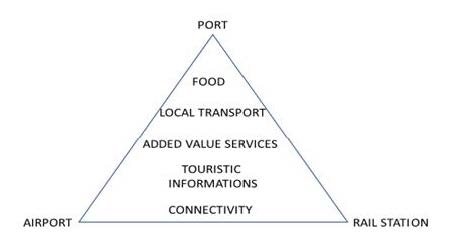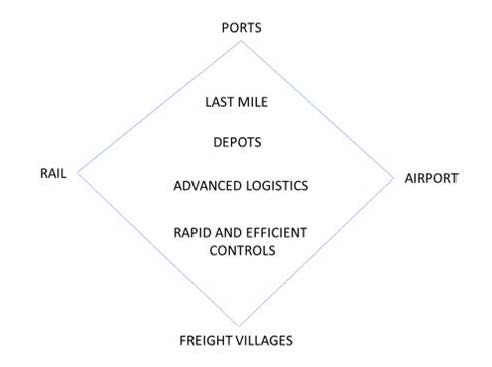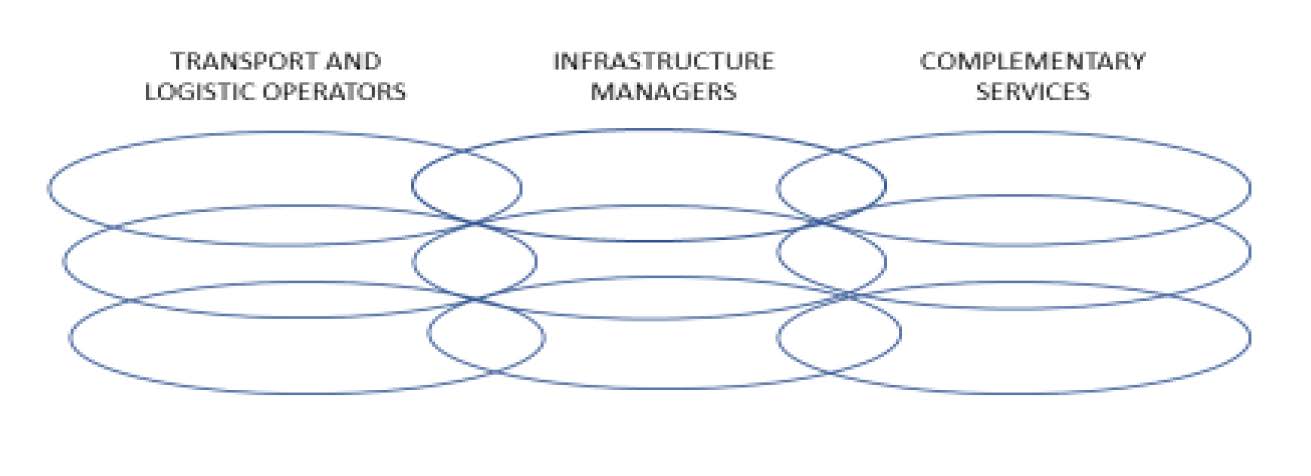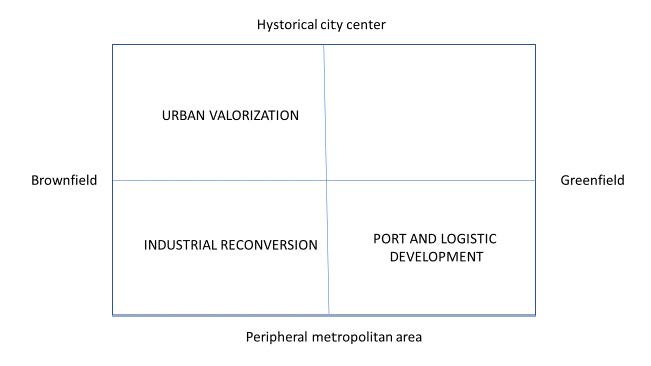In a world economy that has changed the configuration model from inner clusters to open global networks, also the role and the way of functioning of the nodes for transport and logistics must be considered in a different way. Traditionally, each transport node within the metropolitan areas had its own identity and its own function, not dialoging with the system as a whole. The post Covid scenario can speed up the transformation process that was just on the way.
The pandemic discontinuity has clearly demonstrated the centrality of the nodes for the control or for the diffusion of the disease: the main windows for the infection were airports, railway stations and ports. But, for reaching the better results, the necessity was to coordinate the interventions among all the nodes. The porosity of the interactions is one of the main characteristics on which we need to reflect on a post Covid future. Nothing will remain the same, also when the vaccine will win this disease.
The bridge between port and city has become more and more a rift, not in a similar way everywhere. “The port-city physical and functional separation process so much debated in the literature was in fact differentiated regionally across the globe” [1]. This process has happened also for the railways station, that was perceived as a divide in the center of the city, and for airport, perceived as another actor of congestion within the metropolitan area.
Each mode of transport was originally conceived in a separate way: the policies were elaborated and decided not taking into consideration the interaction among the different modalities. Intermodality was more a vocation than a real practice. Now the demand for intermodality is growing, and congestion is concentrated within the metropolitan areas: short distance is becoming the most complex joint of the offering system, in terms of performance and sustainability.
Density is becoming the other major characteristic of our economic environment. “A first study (O’Connor 2010) based on the analysis of port and airport traffic flows, highlights that about two thirds of port and airport cargo traffic passes from terminal located in close proximity of 73 world cities” [2].
For that reasons there is the need of a stronger interaction among the nodes within the metropolitan areas: in perspective we need not only to ameliorate the quality of services within each specific node, but we need also to conceive a strategic design that will consider the services that must be offered by the integrated and intermodal node, defined as the network of the nodes within a metropolitan area, comprehensive at least of port, airport and rail station.
This was the lesson also of the pandemic scenario we lived during the recent experience in each Region and all over the world: the guidelines and the actions for control – in order to be successful – need to be coordinated and simultaneous. Without a common ground the risk of failure was a growing possibility.
In the following chart there is a tentative list of services that must be part of a common design for passengers in the “node of nodes”: food, local transport, added value services (like cultural, financial, banking), touristic information and connectivity, not only in physical but also technological terms.
The integrated and intermodal node for passengers.
It’s a question that regards not only passengers but also freight. The “node of nodes” has a different configuration if we consider these two different segments. In the freight business we need to consider not only port, airports, and rail but also logistic platforms and freight villages (following chart). The most important services than must be taken into considerations are: last miles connections, depots, advanced logistics, rapid and efficient controls for arrival and depart of cargo units.
The integrated and intermodal node for freight.
If we take into consideration the service content of the nodes within the major European metropolitan areas, “the center of gravity for European advanced logistics is located in the North West. The presence of high ranked cities in this area is both related to the concentration of offices, and of the majority of headquarters. Southern Europe is virtually absent from the map, except for the two major centers: Milan and Madrid” [3].
Anyway, passengers and freight movements are part of the competitive building for a metropolitan area: “Material flows remain essential to urban development, contrary to the belief that cities’ growth now only depends on telecommunications and virtual connectivity” [4]. The “node of nodes” must function as an orchestra of several different actors, that can be grouped into three categories (see following chart):
- Infrastructure managers, who are in charge of investing in order to develop the assets for better performances;
- Transport and logistics operators, that use the infrastructure for offering their services;
- Complementary services operators, that are focused on the business opportunities derived from the concentration of different clients present within the node.
“A value network is the multitude of actors (suppliers, manufacturers, service providers, credit institutions, customers) involved in the system responsible for providing products and services to customers” [5]. The interaction among these different players generates the common platform on which the intermediate and final clients can find opportunities for a better service.
The different actors in the integrated and intermodal node.
One of the traditional debate for transport and maritime economics is related to the links between port and cities, in particular focused on the divide between the historical city center and the port activity. If we want to try to actualize this topic, we must put attention also to the question of the peripheral areas of the metropolitan city. The other dimension – that must be considered – is related to the brownfield-greenfield alternative.
Mixing together that four variables (center-peripheral versus brownfield-greenfield) we obtain three different scenarios that are represented in the following chart:
- if we want to operate within the city center in a brownfield situation, there is the possibility to realize a project of urban valorization;
- if we mix a peripheral metropolitan area with a brownfield condition the project could be focused on an industrial reconversion;
- if we are in a greenfield situation within a peripheral metropolitan area, there could be the possibility for a port and logistic development.
Scenarios for port and city relationship.
Notes
[1] César Ducruet, “Revisiting urban hierarchy and specialization from as maritime perspective” HAL, 2020, p. 4.
[2] Mina Akhavan, Hilda Ghiara, Ilaria Mariotti, Cécile Silling, “Logistics global network connectivity and its determinants. European city network analysis”, working paper, p. 3.
[3] Mina Akhavan, Hilda Ghiara, Ilaria Mariotti, Cécile Silling, “Logistics global network connectivity and its determinants. European city network analysis”, working paper, p. 5.
[4] César Ducruet, Hidekazu Itoh, Justin Berli, “Urban gravity in the global container shipping network”, HAL, 2020, p. 12.
[5] Trond Hammervoll, Lise Lillebrygfjel Halse, Per Engelseth, “The role of clusters in the global maritime value networks”, in International Journal of physical distribution and logistics management, vol. 44. n. 1-2, p. 98.
Head image: Port of Naples panoramic view.



